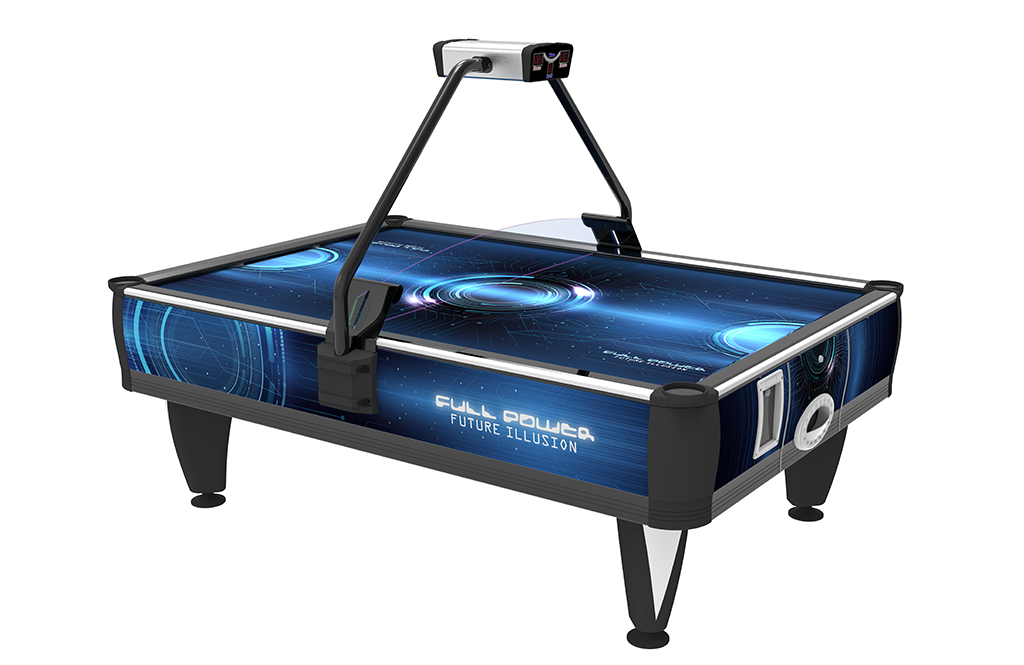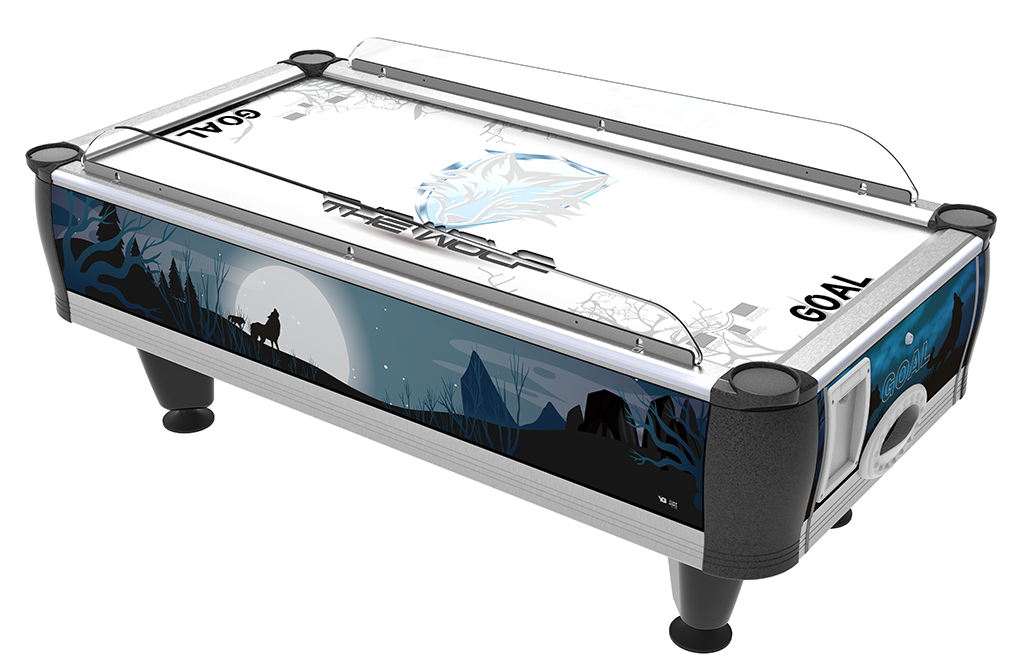How to Clean Air Hockey Table

Contents
Air hockey tables offer endless fun, but neglecting regular cleaning can impact gameplay and shorten the table’s lifespan. Understanding how to clean air hockey table effectively helps maintain peak performance and durability. Consistent upkeep preserves your table’s condition and plays a vital role in smart air hockey table maintenance, ultimately helping to prolong your table’s durability.
Proper care and maintenance of your air hockey table are crucial. Dust and debris accumulation can hinder puck glide, clog air holes, reduce airflow, and compromise gameplay smoothness. Regular cleaning prevents these issues, ensuring consistent puck speed, optimal airflow, and an extended lifespan for your table, thereby protecting your investment and maintaining peak table performance. A solid cleaning routine is one of the best ways to support long-term table care.
Ongoing care helps keep your air hockey table in top condition. The steps below are grouped into three key areas to simplify the process. Regularly following these steps will improve game quality and significantly increase the table’s usable life.
Table Surface Cleaning
- Daily Cleaning: Use a soft, dry cloth to wipe down the table surface, removing dust and debris. Check for foreign particles like small stones or crumbs, and remove them immediately to avoid surface damage. Even minor debris can affect puck glide or scratch the surface, so it’s important to be thorough.
- Regular Maintenance: Spray water-based wax onto the table or cloth, and wipe in circular motions to evenly treat the surface. This helps maintain puck glide and enhances surface shine. A well-polished surface offers better puck control and overall gameplay consistency.
- Clearing Air Holes: Use a toothpick or fine needle to clean each air hole, removing dust buildup. Turn on the airflow system while cleaning to verify airflow and test puck glide after maintenance. Air hole blockage is one of the most common issues that affects puck movement.
Frame and Exterior Cleaning
- Daily Cleaning: Use a soft cloth to clean all exterior parts, including the aluminum frame and plastic panels. Always check that the cloth is free of grit or sharp debris to prevent scratches. Accumulated dust can reduce shine and take away from the overall visual appeal.
- Surface Polishing: Spray wax onto a cloth and wipe down the entire exterior. The surface will appear brighter and more defined, with enhanced reflective quality. Polishing also adds a layer of protection against minor scuffs and smudges.
Internal Electronic Component Cleaning
When it comes to cleaning interior electronic components, always power off and unplug the table first. Never attempt to clean electrical parts while the unit is powered on, as this can pose serious risks of electric shock or hardware failure. Once the table is safely disconnected, follow the steps below to ensure proper care of internal components.
- Use a soft-bristled brush to remove dust from circuit boards, fans, and power units. Dust buildup in these areas can interfere with electrical conductivity and cause overheating.
- Do not use wet cloths on electronic parts to avoid short circuits or damage. Moisture is particularly dangerous near sensitive components.
- Thick dust buildup can hinder operation and heat dissipation, so inspect and clean regularly. Proactive cleaning of the internal components is a key part of responsible equipment care.
Following the cleaning guidelines will significantly enhance your air hockey table’s performance and longevity. Remember these essential tips to avoid common care and usage mistakes:
- Avoid harsh cleaners: Steer clear of strong acids, alkaline agents, or abrasive products, as they may scratch, discolor, or degrade your table’s surface over time. Instead, opt for gentle, pH-neutral cleaning solutions specifically formulated for delicate or laminated surfaces.
- Use proper cloths: Always choose soft, clean cloths free of grit or sharp particles to prevent scratches. Microfiber cloths are ideal for this purpose. They effectively lift dust without damaging the surface, making them perfect for both table and frame cleaning.
- Dry clean electronics: All electronic components must be cleaned using dry methods only. Moisture can cause severe damage, including short circuits or corrosion, particularly in sensitive areas like circuit boards and fans.
- Maintain clear air holes: Keeping the airflow system unobstructed reduces common performance issues and ensures smooth, uninterrupted gameplay. It represents one of the most critical factors for sustained performance and long-term equipment life.
- Set a cleaning schedule: Establishing a weekly or bi-weekly cleaning routine is a simple yet highly effective way to ensure long-term performance and help preserve your table’s condition and ensure consistent performance.
In addition to cleaning habits, consider how and where you store your table between games or during longer periods of disuse. Environmental factors such as moisture, temperature, and light exposure can greatly affect longevity.
- Use a table cover: Using a cover when the air hockey table is not in use is a simple yet effective way to keep it clean and protected. It helps prevent dust and debris from clogging the air holes and shields the surface from scratches.
- Store in a cool, dry location: Excess humidity can lead to mold, while extreme temperatures may warp the play surface or damage internal electronics.
- Avoid direct sunlight: Keep the table positioned away from direct windows or skylights. UV light and heat from direct sun can fade the table’s surface finish and even cause warping in the long run.
Q1. How to make my air hockey table slide better?
Maintain optimal airflow by regularly clearing air holes and applying suitable wax or polish. Removing daily dust and periodic polishing ensures smooth puck movement and prevents airflow issues. Be sure to also test the puck’s glide regularly and inspect the table surface for any uneven spots that could affect motion.
Q2. Can I use WD-40 on my air hockey table?
No, WD-40 is unsuitable due to residue, potential surface damage, and unpredictable puck movement. WD-40 is a lubricant and water-displacer, not a cleaner, and it can clog air holes and create an oily surface that disrupts the game. Stick to waxes or cleaners specifically made for furniture or air hockey tables.
Q3. Can I wax my air hockey table?
Yes, but be selective. Use silicone-free, non-abrasive wax or a specialized air hockey polish. Apply it evenly in thin layers to avoid buildup. This enhances the table’s sheen and ensures better puck flow.
Q4. How to polish my air hockey table?
Apply furniture wax using a soft cloth and gently polish the table’s exterior. This maintains a vibrant, reflective finish and adds a layer of protection against embedded grime and minor scuffs.

Learning how to clean an air hockey table properly is the foundation of long-lasting care and performance. These cleaning and care techniques not only make each match more enjoyable but also help you get more years of reliable use from your table. Investing a little time into regular upkeep can save you money and hassle in the long run.
If you’re looking for trusted equipment or expert guidance to support your maintenance routine, Yuan Gong offers a reliable selection of air hockey tables and accessories. For more tips or help choosing the right products, contact us! We’re happy to help you keep your air hockey table in top condition.

